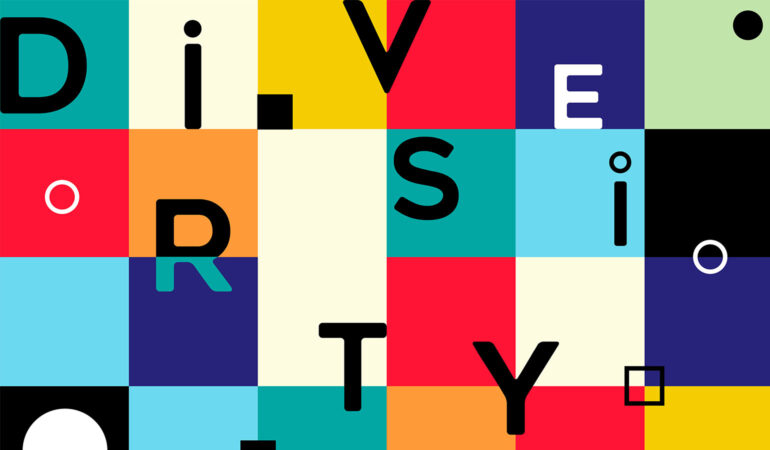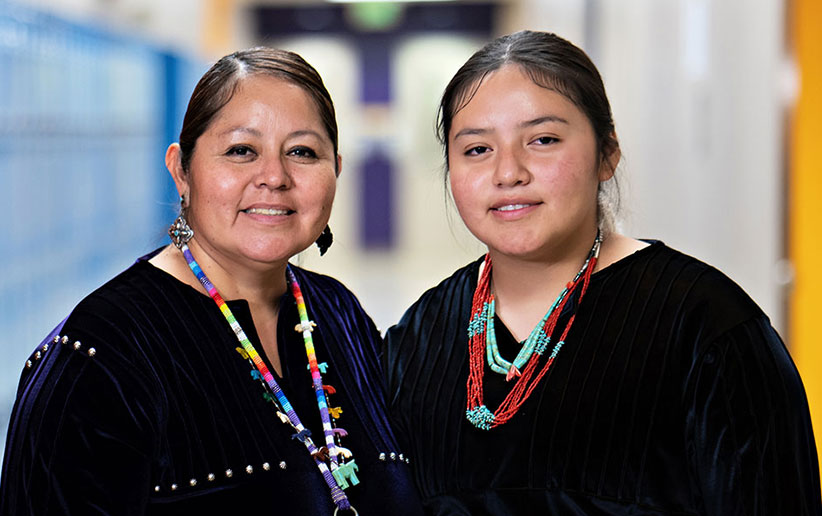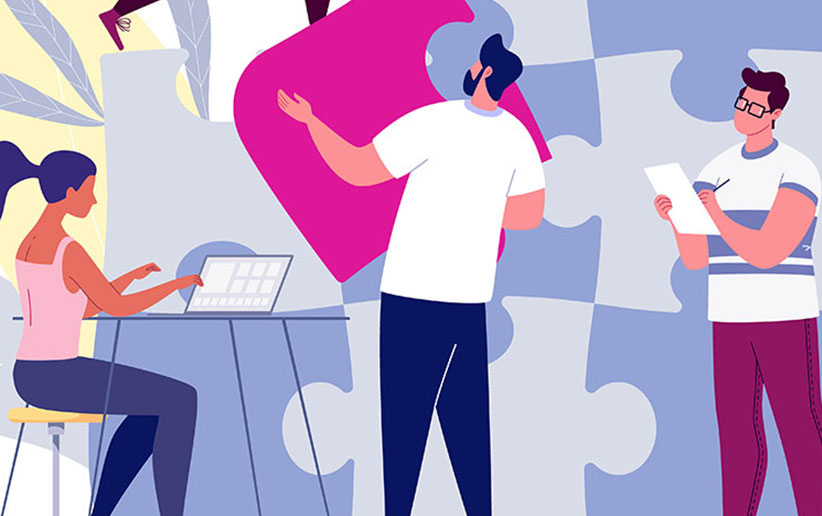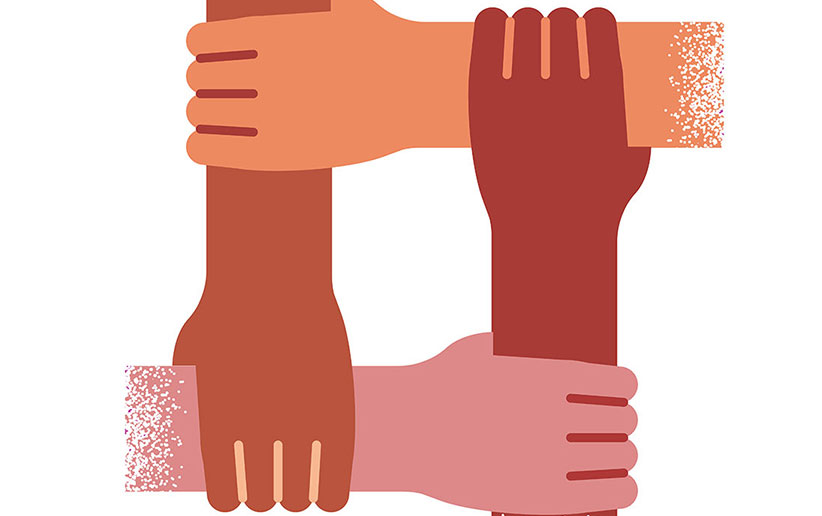Marc Fernandez, an internship coordinator for Iona University’s Marriage and Family Therapy Program, as well as an adjunct professor, and Christiana Awosan, associate professor, recently sat down for a discussion about growing diversity in the profession and, in general, ways in which they have seen an increase in the diversity of their student populations.
A diverse setting
Located only 30 minutes from New York City, Iona University is situated in a very diverse area, with diverse students attending their program. Whether it is around race, gender, sexual orientation, age, class, or ability—they get a range of students from all walks of life and lived experiences, which makes their classes, discussions, and learning very enriched.
Christiana notes that recently, “We had international students and students who grew up here, and everyone was talking about school shootings and the experiences of that and how it is drastically different for each person. The discussion showed the richness of diversity that we get in our classes. And the same is true with the clients we see—we get a diverse range in our clinic, also.”
It helps the students to not only relate to their clients, but to learn about the cultural differences of their clients, as well. Further, the program’s faculty members in recent years have also been very diverse. Christiana shares, “It’s actually critically important, because, as students have told us, ‘you’re the first Asian professor or Black professor, or even Latino professor that I’ve had,’ and that means a lot to them to be able to have representation because it allows them to be even more engaged; to be more involved in their learning.”
Marc agrees and adds, “I think the diversity of faculty is so important, as Christiana mentioned, and how students seek our program out. And a big part of it is because there’s such a diverse faculty where they are seeing people who resonate with them from a background, maybe a racial standpoint, and that’s very important to stepping into this work that is incredibly, incredibly deep through the process of self of the therapist and how they grow into the therapists they will become.”
“We are one of the very few MFT programs in our general area that has an on-site clinic. And so that really allows us to provide some very close supervision and observation of our students’ work,” Marc explains.
As a training clinic that is very community-focused, they offer services with student therapists at an incredibly low to almost no cost, and that makes it easier to reduce or eliminate the barriers that exist for many historically underserved communities to access mental health. That alone opens the doors to an incredibly diverse client population. Marc adds, “With an already diverse student population and a diverse faculty population, that really generates some incredible conversations that would not otherwise be able to happen when we do a group supervision or a live observation.”

Christiana notes, “We need to train our students to work with diverse populations, and in our program, we’re doing it right from day one. Even before they step into the program, during the admissions process, during the interview process, they’re stepping into that and it’s really important because not only are the students learning about diverse populations, most of them are learning about themselves, even with the faculty member.”
The faculty are either doing research or writing about populations to which they belong. For example, Yaliu He, PhD, LMFT, does research work on the Asian population. Christiana works with the Black population, and Marc has his own private practice.
“Because of who we are, people who look like us will come to us, as well. It also helps students to see representation and the examples that we’re giving in the classrooms, whether it’s around race, sexual orientation, and also the books and the text that we’re reading in the classroom, as well,” Christiana says.
In regard to inclusive admission policies, this is a starting point for the program.
“If we want to train a diverse student body to work with the growing diverse population in our world globally, we have to definitely start from the admissions process,” says Christiana. “One of the things that we do with our admissions process is a group interview and an individual interview. When students do the group interview, they’re able to see the diversity in the program and see themselves within each other; in potential students who are going to be in the program. And we also speak their language in terms of really being explicit about the fact that we do focus on diversity. That’s one of the core philosophies of the program.”
There is also a focus on social justice, as well as self of the therapist work. Marc adds, “It’s so important for MFT programs and other programs, as well, to start from the very beginning, and that is the mission statement, the vision statement, and those should be included as not just text, but as a strong belief to the program and how the rest of the program operates.”
Christiana explains, “When potential students see it on our website, and then they look at the faculty members, they see representation. They see our words aligning with what we’re saying, and then when they come to the group interview, the individual interview, they’re able to also see those words aligning with each other, as well.”
The program also notes it’s doing a really good job of advertising at undergraduate schools, and this helps them pull in a diverse group of candidates to apply for the program.
Curriculum development
Iona recently went through a revamp of their curriculum in the last year. They have always, as a program, integrated the topic of diversity and inclusion and health disparity in their courses, but it wasn’t reflected in the descriptions of the courses, or even in the names of the courses. They decided to revise this and make the implicit explicit. To a further extent, they also applied this to their student learning objectives and core competencies so that everything is clearly related to diversity, working with marginalized and underserved populations, and addressing power differentials within therapeutic relationships that impact therapeutic outcomes and health disparities.
Christiana explains further: “One of the things that we’ve done is really make sure that in all of our courses, it is connected, interwoven, and integrated throughout this topic of really talking about diversity, equity, inclusion, the impact of power and privilege in understanding the symptoms and problems that people are bringing into therapy and how even the therapeutic relationship can create ways in which clients might not want to connect with the therapist or the therapist might not want to connect with the client, and how we talk about that. There’s no course in our program where we don’t talk about diversity, health equity, or disparity.”
Christiana recalls that when she joined the faculty, there was no specific diversity course. It was discussed in all courses, but the program recognized the need to have a specific course that focused on diversity and the need to name it as such. “My goal is to really help students understand the importance of cultural awareness, cultural sensitivity, and cultural responsiveness. I tell students when we talk about culture that we’re not just talking about race; we’re talking about gender, class, sexual orientation, the different contextual factors that we all have as human beings, and how we bring that into the work we do as students, as student therapists, as just human beings in the world.”
Part of this, Christiana explains, is integrating self of the therapist work—“Looking at the ways in which biases, whether consciously or unconsciously, around any of these contextual factors impact the ways in which we show up as a student therapist, and our training with clients, and our work with clients, and our work with and collaboration with each other as a pair, even as a faculty member. We talk a lot about power and privilege, as well. And we focus on the ways in which power and privilege also dictate the ways in which we enter into relationship with diverse populations. Some semesters we focus a lot on race and helping students to have difficult conversations around race.”
There is also a focus on sexual orientation to enable students to have difficult conversations around sexual orientation and to deal with their own biases. Students may be anxious, not knowing what to expect from the course, but they leave having more appreciation for learning more about not only themselves, but about another person who is different from them, whether it’s in terms of their race, gender, class, or their sexual orientation.
Christiana notes, “We also purposely talk about whiteness and identify what that is and how that impacts all of the ways in which oppression in our society, whether it’s around race, gender, or class, might be impacting our relationship with one another. It is very much focused through an anti-racism, anti-oppressive lens and helps our students have more empowerment and be able to have this difficult conversation and be more aware of the ways in which differences are not a bad thing, but a good thing—the power of being different and working together as human beings.”
My goal is to really help students understand the importance of cultural awareness, cultural sensitivity, and cultural responsiveness.
Cultural awareness, sensitivity, and responsiveness
This is an area where the program needs to continue growing, emphasizing cultural awareness, cultural sensitivity, and cultural responsiveness. Cultural awareness is basically being aware of the differences that we have as human beings, whether it’s our race, gender, class, or sexual orientation. There are differences in life and differences in human interaction, and there’s nothing wrong with that. Christiana explains, “We move from cultural awareness to cultural sensitivity. Cultural sensitivity is really paying attention to how the differences that we have also might evoke emotional responses in us, whether for good or not so good. And we know that in our society, it’s usually not so good—because the way in which we’re socialized as human beings, sadly, is to be afraid of differences, to shun differences.”

Faculty help their students pay attention and be sensitive to the emotions that come up for them. Christiana notes, “The next question is, what do you do with those emotions when they come up for you? This is cultural responsiveness. The goal here is to focus on how we work on behalf of our relationship, whether it’s another human-to-human relationship, personally, or in this case, because we’re training them to be therapists, the therapist-to-client relationship. How do you respond in a way that is respectful, healing, affirming, and understanding? And when your own sensitivity comes up, how do you respond in a way that allows the client to truly show up to say, yes, I want to be in your presence to do this difficult work of dealing with my emotional needs, my mental health needs, and my relational health needs, as well.”
As students do genograms, they are able to hear one another’s stories; the differences in terms of their family of origin, lived experiences, and they start to pay attention to the emotions coming up for them and how they’re responding to each other. Christiana remarks, “By the third year, students are really owning that skill of awareness and sensitivity that they now have. Now, how do you respond in a way that is equitable, in a way that is culturally responsive and healing for the clients, and even for each other in the classroom where we’re working?”
Marc expands on this by commenting, “I think it’s important to paint that picture and really describe the wholeness of that, and how it plays into so many different areas of not just a program like ours, but how it will continue to show up as a life’s work in anyone’s career and in their own personal lives, too.”
As they tell their students, “If you’re able to practice it in your personal life, it will come easily for you in the therapy room. Let’s get all the anxiety and difficulties out in the classroom so that when you’re in the therapy room with the client, you’re able to actually do this work in a way that is effective.”
Diverse faculty
So, how does the diversity of faculty impact students and their educational experience? Marc notes, “Having a very diverse faculty, and not just the diversity of the faculty, but ensuring that the faculty in the program has done the work themselves to bring that into the room, is incredibly critical because all of this work the students are doing in their class and in their personal lives as they bring that now into clinical practice, and they bring that into the group supervision room, and they’re having these real conversations about real clients they are working with, the impact is huge for that faculty to be diverse. Not only diverse, but to have done that work themselves.”
Christiana agrees. “Just having diverse faculty members isn’t enough. If you haven’t done your own work around things like really identifying your own biases, being able to understand the power and privilege you bring into the relationship with students and clients in terms of your relationship with them, whether it’s your gender, your race, your class, or just being a professor in general, there are ways in which you might misuse that. And as a diverse faculty member, you’re able to be a model to students, and they will be able to see that and think, ‘Oh, this is the way in which I can do this,’ and also see if the faculty members are doing the same thing with each other.”
Students from underrepresented backgrounds
It’s important to also consider how programs can attract students who come from underrepresented backgrounds and underserved populations, and factors like the rising costs of higher education, which can be incredibly difficult and a massive barrier for many. Programs have to consider what ways scholarships and financial aid can help bring students from underrepresented backgrounds. Financial challenges make attending and finishing the program difficult because students are working while they’re trying to finish their full-time coursework, plus seeing clients, which is a challenge.

Christiana notes, “We talked to the dean and the higher-ups about how we could reduce the tuition fee. Every institution is different, but Iona really focused on how we could do this for our students. After some hard work, our dean was able to get tuition reduced a bit. And then we’re also thinking more outside of the box. What are other ways we can do this? Definitely grants. Some of the grants we have are the Behavioral Health Workforce Education & Training Grant (BHWET) and the Cabrini grant, to really help our students in terms of learning how to do interprofessional education that will also supplement them in giving services to underserved populations.”
Another option they turned to was the Minority Fellowship Program (MFP). Christiana explains, “We felt it was important, not only in terms of helping our students financially, but also socializing them to the profession of marriage and family therapy, and so we had the MFP staff come and present to our students and tell them about the program and have them apply. We also have the Collegiate Science and Technology Entry Program (C-STEP). The director for that program came to inform the students that this is another opportunity they have to get financial assistance, as well. So, as faculty members, it’s not just that we’re teaching; we’re also thinking about how to help our students be able to handle the burden of the financial cost of coming to a program like ours. The reason why some students who are underrepresented drop out and end up not becoming marriage and family therapists is because of the financial burden. And we have to work on that if we want to increase the diverse clinicians within the field.”
Clinical training
Another factor to consider is how clinical training can play a role in exposing students to a variety of clinical environments and preparing them to work with diverse populations.
Marc shares, “In that pre-practicum space where students are more focused and training to see their first clients, there’s a lot of conversation about what the internship experience will look like for them and where they can go, with whom will they be working, not just from a diverse population of clientele, but interdisciplinary as well; we’re going to be working with other mental health professionals and other medical professionals in some regards, and maybe other educational professionals. So, the conversations are obviously important. But when we get into the hands-on training piece, we have to start bringing case scenarios into role-play that really reflect the real-world clients students will ultimately see.
“At our program, we’re very grateful to have a new clinic where we have the ability to bring our pre-practicum class in. It will be the first time this spring that we can do this, and we’ll be setting up very specific role-plays that are related to case scenarios that bring up critical topics related to a lot of the contextual factors we spoke about earlier, and, in doing so, we get to see what is elicited from the student, what comes up for the student, how the student shows up around those conversations in a way that we can then have good discussions about it and I can help train them and they can work through that on their own so we’re doing it in a safe space before they’re going out into the real world. I think it’s kind of a missed piece of the clinical training.
“In addition to that, we have to, of course, look at the other clinical skills, assessment, diagnosis, and things of that sort, but also have conversations around and train our students on the assessments we’re using. How are we approaching diagnosis, and how are we approaching it in a way that is inclusive of a range of diverse populations of clientele, and not just using assessment, maybe historically the way that it was created, where a lot of assessment tools and diagnosis approaches were built off of a very specific demographic of people, and it didn’t include other populations. We see a lot of underrepresented communities misrepresented as they are diagnosed or assessed.”
Community collaborations
Speaking on the topic of collaborating with community organizations and mental health agencies that serve diverse populations in their local area, Marc reflects on their program’s proximity to New York City, one of the most diverse, if not the most diverse place on the planet. “From step one, this gives our students an opportunity to work with an incredible range of clients and expanded opportunities for interning. Although there are opportunities to go into a private practice or a group practice, or more traditional mental health organizations, we do have students going into agencies that have low to no cost mental health services, schools that are located in historically underrepresented areas, family medical centers, federally qualified health centers, FQHCs, and we are also recently expanding MFTs into a large hospital system.“Within that space, we’re really trying to bring the concept of medical family therapy into our program because we know that for a lot of people, a hospital serves as the first location they may go in a moment of crisis. It isn’t always for a physical reason. But from that moment, whether it’s a moment of crisis or it’s a moment of them simply stepping in to get some sort of treatment in that world, the opportunities for mental health to now become part of that picture are critical. And it’s so important for MFTs who are trained relationally and systemically to be able to hold onto that space for those individuals and those families and work with them within that setting because the barriers will only start to increase from that moment on as to their ability to access family therapy, relational therapy, and individual therapy.”
Another way the program helps students have practical experience and connect to diverse communities is through interprofessional education.
“MFT students collaborate with other mental health students in areas like social work, occupational therapy, nursing, and school psychology, to provide interprofessional services to communities, for example, in working with immigrants,” Christiana explains. “They’re doing storytelling for young children. They go into diverse schools and work with diverse students within the school system, as well. So those are examples of ways that we’re trying to not only teach in terms of diversity of contextual factors, but diversity in terms of the type of mental health agencies or even educational settings and social agencies that our students can go to and collaborate with other disciplines, diverse disciplines, because one of the things that we’re trying to help them understand is this is the way in which the world is going to work. If we’re able to work collaboratively with other disciplines and have diverse knowledge, awareness, and understanding of how to help diverse populations, this better serves our society than everybody being in their silos.”
Marc responds, “One thing I could add to that is, in my role as internship coordinator, it’s important to not only take a look at the director in the list of the community organizations that have historically been connected to Iona University and the MFT program, but expanding on that, in a way where you’re really challenging the status quo.
You’re looking at places that seem to be serving the underserved demographic, but when you take a closer look, where are all the relational therapists; where are the MFTs? And, of course, we’re a small group compared to other professions. But I think that’s quickly changing now. I think something programs can do is to challenge and educate others about how MFTs work differently and also collaboratively from that interdisciplinary approach.”
Diversity in research and mental health disparities

Christiana shares, “My first research in the field of marriage and family therapy was focusing on Black clients’ experiences. Everyone asked me why I wanted to go into MFT and said, ‘Black people don’t go to therapy.’ But I knew that wasn’t true. I was at Syracuse and we had a clinic there with Black clients, so I wanted to explore their experiences around coming to therapy and talk about the relational mental health issues they were experiencing. That study propelled my focus on doing research with Black families, couples, and clients—focusing on diversity, particularly race. From that experience, it was clear we need to have more diverse clinicians. There need to be more people of color going into the field of marriage and family therapy and mental health in general. There is also a need to talk about race in therapy because it’s also connected; the stresses, pain, and trauma of race issues are connected to mental and relational health issues that clients bring into therapy and the problems that they’re having in society, in general. I learned that diversity and mental health research is crucial, and the good thing is, more and more research that we’re doing now is really focusing on that. A lot of the research in the past, and particularly when we think about evidence-based models in our field, is really focused on white, heterosexual couples and males. It doesn’t really speak to the experiences of marginalized people, people of color, or those in the ‘minority’ status in our society, whether it’s around their sexual orientation or even their class. I think it is important for us to start doing this kind of research because it helps us understand the lived experiences and perspectives of those who might be impacted by the effects of stressors on their mental health, their relational health, and their emotional health. We really need to speak to their needs rather than trying to come up with a model and just placing it on them.”
When asked if universities are doing enough to focus on such research and encouraging research to better understand disparities in mental health outcomes, Christiana replies, “Not necessarily. It’s costly to run a PhD program. At the same time, we have diverse students who want to do research on health disparities, and if they come from that population, they want to do research on themselves. I’ve heard it said that research is actually ‘me search.’ You are actually researching yourself or your community. If we have a diverse group of students, then we have diverse research interests and diverse research plans that people are doing. I think that helps us understand mental health disparities even better and could help develop interventions from the lived experiences of those diverse researchers.”
What more can be done?
Christiana reflects back to when she joined the field. “I started in 2006, and I feel like AAMFT has moved forward regarding the importance of diversity in a way that I’ve recognized in our training, as you can see in moving from the COAMFTE Standards from 10 now up to 12.5. Now we are listening to the next generation and saying, yes, we need to really focus on the changing environment in our world and talk about diversity and the importance of training diverse and culturally responsive clinicians and also do research in that area so that we can address the mental health disparities in our society and have a better health outcome. A lot still needs to be done. There’s still room for growth. There’s still room for improvement. And I think AAMFT can do more, and our programs can do more in terms of highlighting the importance of this topic, not only in our mission and vision, but also incorporating it in our curriculum.
“An example would be to have a health policy course, even at the master’s level, so students can understand that the impact of what they’re doing in the therapy room actually impacts the ways in which policies are created in our government and in society around mental health—the resources that we’re providing for mental health and the economic assistance that we’re giving people.”
Christiana further elaborates: “In one of my classes, I ask students to do a creative moment, and someone showed a movie about a school shooting. It was very, very traumatic for the students. And I began to realize that literally all of them, in this generation, have been impacted by this. They’ve all gone through shooting drills at school, and even I was in high school when Columbine happened, so really, things like talking about gun violence are part of those bigger policy issues that need to be discussed and supported. Look at the emotional, mental, and relational disruption to community, to mental health, to emotional health that has such an impact on people sitting in this room. So, we talked about how, as therapists, we can help our clients with this. But then there needs to be something broader to address the mental, emotional, and relational health of people in our society who are suffering because of this.
“And so how do we train MFTs to also be advocates? Not just advocates in the therapy room, but outside the therapy room, as well. We need to do more around it. AAMFT and other leading organizations need to address the disruption and suffering that gun violence and other stressors create in our society.”
Marc concludes, “I think getting bigger numbers to MFT lobbying events and things of that sort are important as well, and just having the voices be heard.”
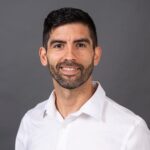
Marc Fernandez, MS, is an AAMFT Professional member holding the Clinical Fellow and Approved Supervisor designations, a licensed marriage and family therapist, clinical director and internship coordinator for Iona University’s Marriage and Family Therapy Program, as well as an adjunct professor. He works directly with students from Iona’s MFT Graduate Program as they accrue the clinical experience needed to graduate. Fernandez also develops relationships with potential referral sources in the community, such as local schools, hospitals, and organizations to keep them up to date on IFTC’s services.
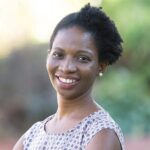
Christiana I. Awosan, PhD, teaches courses in fundamental concepts of psychiatry, relational psychopathology, and supervised case seminar. Her research focuses on diversity, inclusion, and social justice, and her publications address culturally responsive clinical practices and effective training of marriage and family therapists. Dr. Awosan conducts national and international trainings and seminars on issues related to understanding sociocultural trauma, such as racial trauma on the mental, emotional, and relational lives of Blacks and People of Color.
Other articles
Indigenizing the Workforce and Workplace
When I was a newly licensed therapist, nearly 20 years ago, it was even rarer to have access to an Indigenous mental health provider. As a marriage and family therapist, I often heard comments like: “It is so easy to talk to you,” “You understand me,” and “You are not judging me.” These comments were often followed by an appreciation that I am an Indigenous provider. Many more clients over the years shared stories of discrimination and mistreatment at the hands of other non-Native providers.
Laurelle Myhra, PhD
Increasing Belongingness for the Future of MFT Programs, the Field, and Our Association
Social, environmental, and contextual stressors can lower students’ academic pursuit for post- secondary education and professionals’ engagement with the field and AAMFT, and often create barriers to success.
April Lancit-Harmon, MFT, Nisan Ilkmen, PhD, and DeAnna Harris-McKoy, PhD
Making Social Justice “Stick”
Social justice is a term that is frequently heard in marriage and family therapy (MFT) training programs. However, there is evidence that suggests that even when social justice is taught and discussed in the learning environment, it doesn’t end up in practice later.
Lisa Rene Reynolds, PhD, Razan Masri, and Palmer Skudneski
